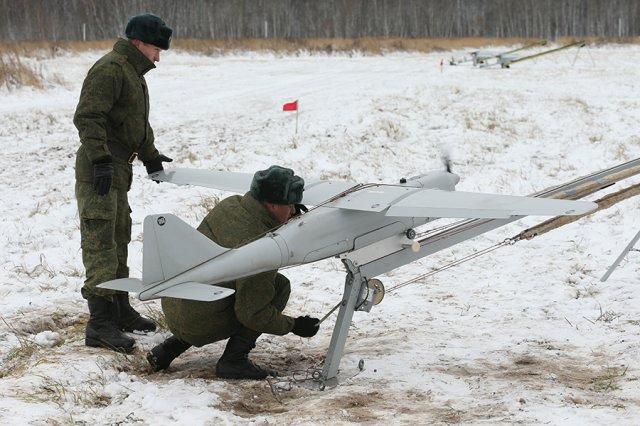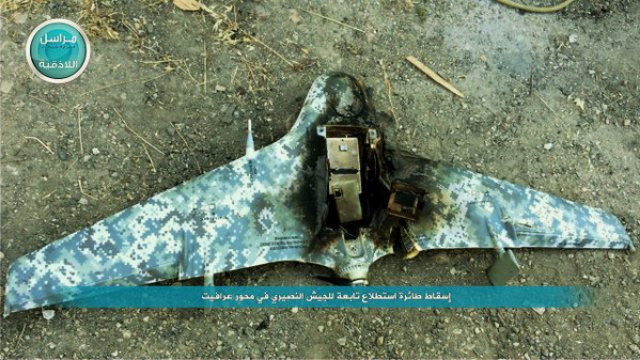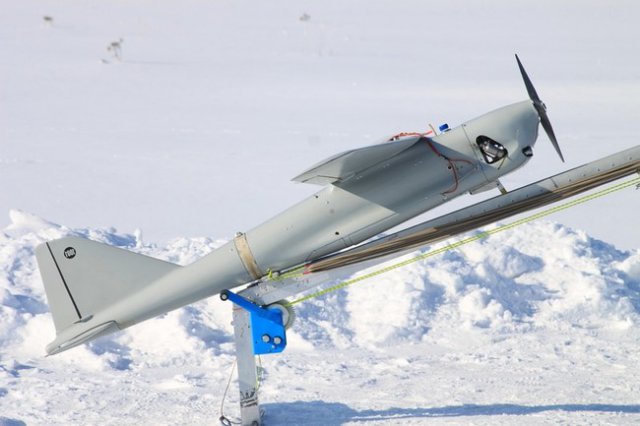Noting the success of micro UAVs (Unmanned Aerial Vehicle) like the RQ-11 Raven in the West Russia has sought to develop its own equivalents. Because of low production costs it made sense to test several candidates on battlefields and in some of the harshest environments of the world.
While much less capable than their bigger cousins, micro UAVs offer certain benefits not achievable with the former – small, cheap, and not dependent on airfields. Moreover micro UAVs can be deployed in large numbers, often by small infantry units or by artillery spotters, granting front-line ground units fast, easy, cheap and direct access to a part of surveillance capabilities that before had to be requested from and organized by higher level headquarters, which often prevented the vital intelligence from arriving to the ground troops in time, especially in poorly organized, heavily bureaucratic militaries, like the Syrian one.
As these drones are cheap and meant to be widely available, despite the relatively small scale, low key deployments, eventually few of them got shot down, or encountered technical problems, which has allowed the enemy (or potential enemy) to capture them and make their presence public.
That is what happened with the Russian Eleron-3SV UAVs in Syria. The $55,000 Eleron-3SV is a battery powered, 4.3 kg (7.49 pounds) UAV travelling at speeds of from 70 to 130 kilometers an hour. Flight endurance of up to 2 hours, and maximum altitude of 5,000 meters (16,000 feet). It is launched by throwing it and can land by flying close to the ground and shutting its engine off. One of these UAVs was shot down by Syrian rebels (from al Nusra). Russia long supported the beleaguered Syrian government and sending some Eleron-3SV UAVs was not unusual. It’s unknown whether the Eleron-3SV UAVs were operated by Syrian or Russian personnel, as Russia has kept technical, military and intelligence personnel in Syria before, both for its own ends, and as direct support to the Syrian government, which had problems with providing enough highly educated, well trained technical specialists to its military forces even before the civil war.
It’s slightly more worrying to Russia that several of its new Orlan-10 drones were captured in Ukraine. Somewhat larger and more capable than the Eleron-3, the damaged drones not only present reverse engineering for anyone who gets access to them, they are also weakening the Russian government’s official statements that Russia is not providing military support for the separatists, as the drones are new models that were not officially exported anywhere yet. At the same time, Russia is using the Orlan-10 in the Arctic region. The propeller-driven micro UAV is being used there to monitor maritime navigation routes in Russian territories and to aid in search-and-rescue operations, helping to stake Russian territorial claims in the area. With an operating temperature range that goes down to minus 30 degrees Celsius (-22 Fahrenheit), the Orlan-10 is one of few UAVs that Russia has recently designed to be capable of functioning in the Arctic environment.
The Orlan-10 weighs about 15 kilograms (33 pounds) and can carry a payload of up to 6 kilograms of various kinds of recon equipment, including infrared cameras, or an array of multiple cameras used for creating 3-dimensional maps. Its 95 octane gasoline powered engine grants it a cruise speed of 90 to 150 kilometers an hour, a service ceiling of about 5 kilometers, and a flight endurance of 16 hours. Together with control and launch equipment, the Orlan-10 costs approximately $480,000. The aircraft is launched via a portable, folding catapult, and lands by shutting down the engine and deploying a parachute.
These two UAVs are a big improvement on earlier Russian efforts and make good use of proven Western UAV design and construction technology. Most modern UAVs are not high-tech and it was always baffling why the Russians insisted on holding on to their older UAV technology for so long.
Source: Strategy Page



